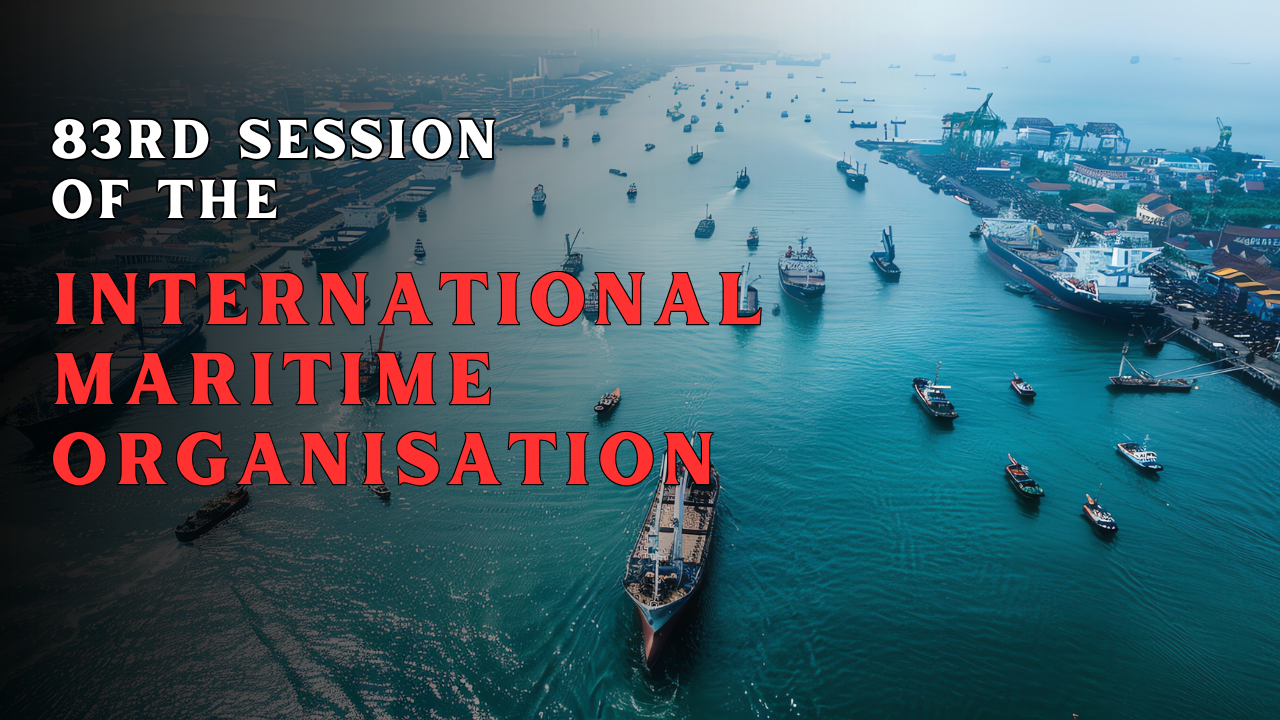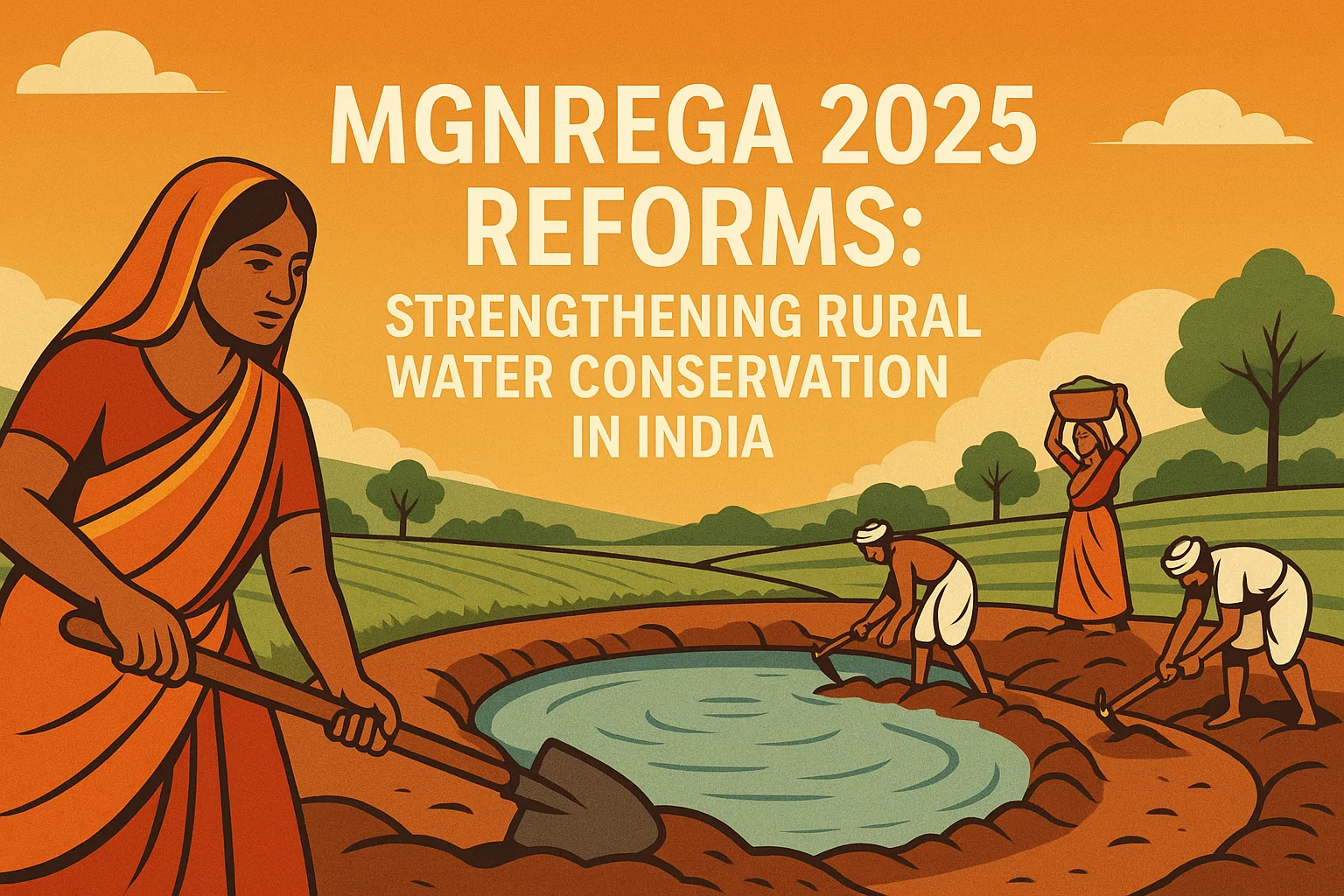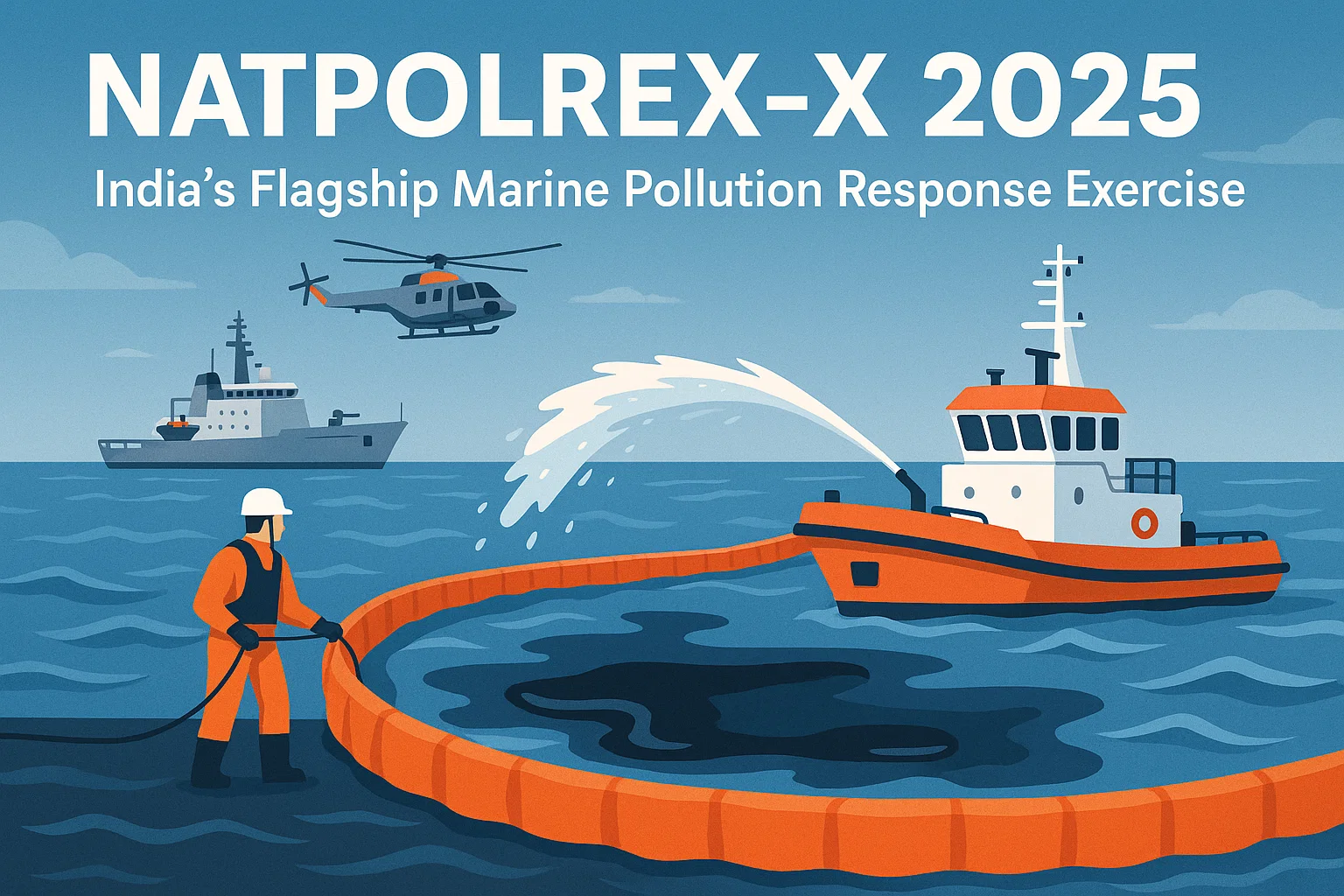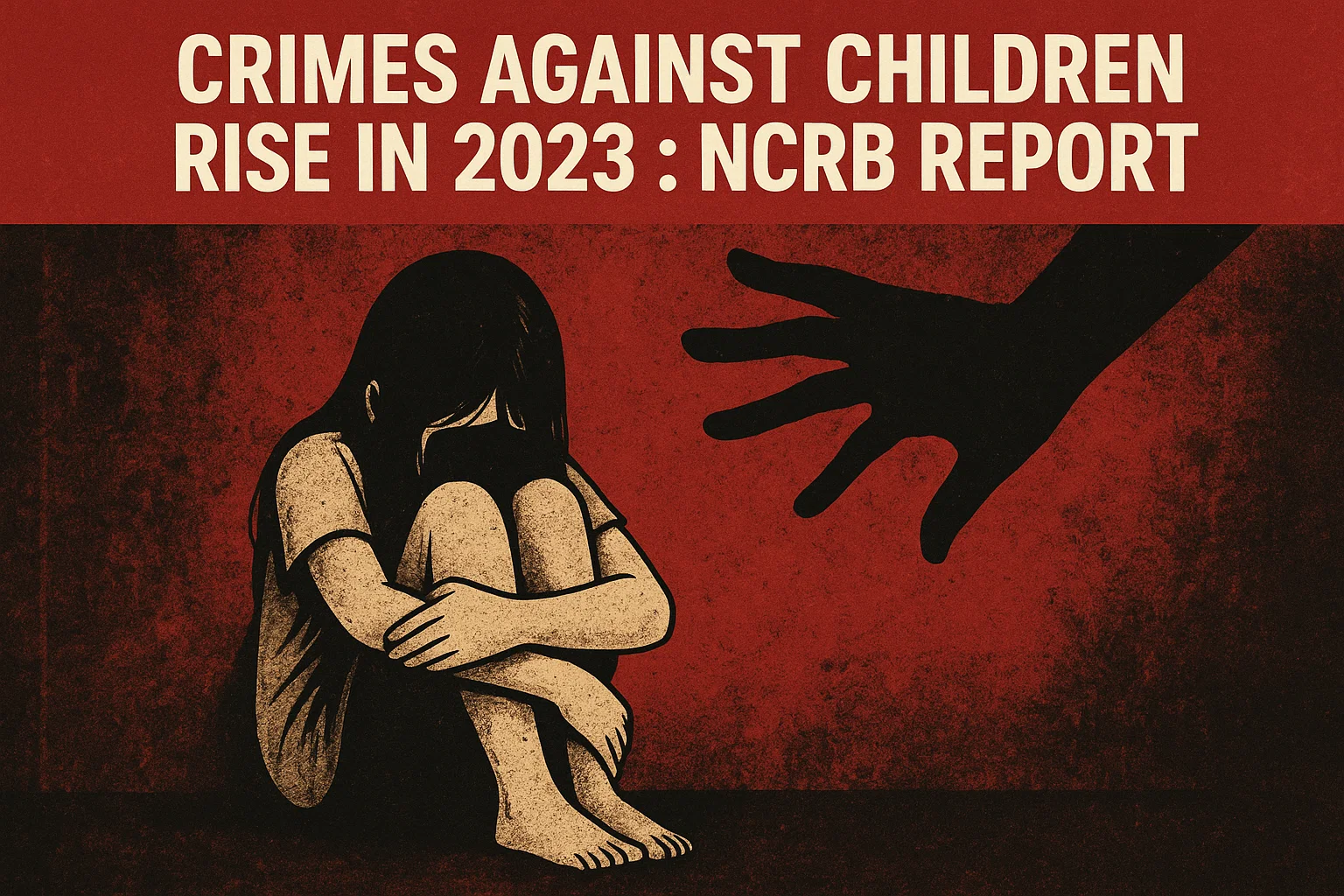Font size:
Print
83rd Session of the International Maritime Organisation: Bold Steps to Cut Shipping Emissions
83rd Session of the International Maritime Organisation: Powerful Push for Greener Shipping Solutions
Context: After more than ten years of discussions on decarbonising the maritime sector, the 83rd session of the International Maritime Organisation’s (IMO) Marine Environment Protection Committee (MEPC-83) marked a turning point.
More in News
- The committee aimed to reach a consensus on introducing a Market-Based Measure (MBM) that would ensure both environmental impact and economic equity.
Key proposals
Five proposals were tabled:
- International Chamber of Shipping: Fixed levy per tonne of CO₂
- China: Market-trade system with compliance units
- EU: Fixed GHG levy managed by an IMO fund
- India: Levy targeting only non-compliant ships, rewards for ZNZ fuels
- Singapore: Enhanced version of India’s model with a GHG Fuel Standard and tiered compliance
- In a significant development, the IMO voted (63–16) in favour of adopting Singapore’s hybrid proposal—rooted in India’s ‘bridging mechanism’—as the foundation for a Net Zero Framework targeting shipping emissions. This decision makes the maritime industry the first global sector to implement a mandatory emissions levy framework.
About the Proposal
The proposal blends:
- Rewards for Zero or Near-Zero (ZNZ) fuel usage
- Penalties for underperformance via purchase of remedial units
- A GHG Fuel Standard (GFS) for emissions benchmarking
However, the decision is not yet final. It must now:
- Be incorporated into Annex VI of the MARPOL ConventionUndergo a 6-month circulation and secure a two-thirds majority for formal adoption
- Avoid being blocked by one-third of parties controlling ≥50% of global shipping tonnage
Countries Response
Was the U.S. a participant?
- No. The U.S. (under Trump’s administration) did not participate and warned of “reciprocal measures” if a uniform EU-backed carbon levy passed.
- This reflects a broader rollback of climate-related mandates in U.S. federal agencies.
- Opposition
-
- Oil-exporting nations (e.g., Saudi Arabia) opposed strong green fuel measures to protect fossil fuel interests.
- China and other large shipping nations sought minimal levies to maintain competitiveness.
- Supportive
-
- Small island nations & LDCs demanded high carbon levies to fund climate resilience.
- Scandinavian countries sought credit for early green investments.
- Brazil backed a rapid shift to methanol.
- Sceptical: Traditional maritime powers like Greece were sceptical about the feasibility and necessity of a green levy.
India’s Position
India played a pivotal role by:
- Proposing a bridging mechanism that influenced the final adopted model
- Balancing climate responsibility with developing country concerns
- Promoting a fairer framework that doesn’t unduly burden emerging economies
Strategic Benefits for India
- Limited near-term impact: MBM applies only to international shipping, not India’s coastal fleet.
- By 2030, estimated cost rise of ~$108 million for international fleet fuel — manageable.
- Green hydrogen export potential:
- India is investing heavily under the National Hydrogen Mission
- Ports being prepared for green hydrogen bunkering
- Indian green hydrogen already meets IMO’s emissions thresholds for incentives.
Importance of Green Shipping
- Shipping emits ~1 billion tonnes of GHG/year (~2.8% of global total), making it the 6th largest emitter if it were a country.
- It also emits 9% of global sulphur oxides and 18% of nitrogen oxides, causing air pollution, acid rain, and health risks.
- With maritime trade projected to triple by 2050, uncontrolled emissions could rise 50–250%.
Subscribe to our Youtube Channel for more Valuable Content – TheStudyias
Download the App to Subscribe to our Courses – Thestudyias
The Source’s Authority and Ownership of the Article is Claimed By THE STUDY IAS BY MANIKANT SINGH




